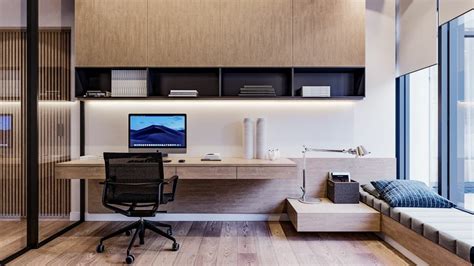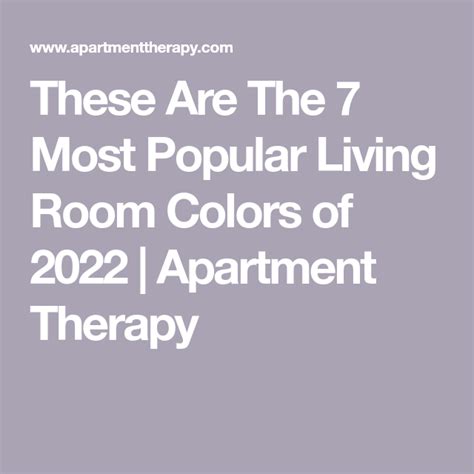
A cramped, 100-square-foot office and guest room has been transformed into a seemingly expansive space through clever design solutions implemented by two interior designers. Faced with the challenge of maximizing functionality and aesthetics within a limited footprint, the designers employed a range of space-saving techniques and optical illusions to create a comfortable and multi-purpose area.
The project, detailed in a recent home makeover feature, showcased how strategic design choices can significantly impact the perception of space. The initial room, described as “cramped” and lacking in both storage and aesthetic appeal, was presented to designers Lisa and Lori, who collaborated to devise a comprehensive redesign plan. Their objective was not only to create a functional office space but also to seamlessly integrate a comfortable guest sleeping area without compromising the room’s overall usability.
One of the key strategies employed was the use of multi-functional furniture. A custom-built Murphy bed, seamlessly integrated into a wall unit, serves as both a stylish storage solution and a comfortable sleeping space for guests. When not in use as a bed, it folds away, revealing additional shelving and storage compartments. The design team also incorporated a sleek, space-saving desk that can be easily folded down when not in use, further maximizing the floor space. “We really wanted to maximize every inch of space in this small room,” said Lisa.
Color palette and lighting played crucial roles in creating the illusion of spaciousness. The designers opted for a light and neutral color scheme, which reflects natural light and makes the room feel brighter and more open. Accents of bolder colors were incorporated through accessories and artwork to add personality and visual interest without overwhelming the space. Strategically placed mirrors also contribute to the illusion of depth, making the room appear larger than it actually is. “Light colors are always a good choice in small spaces because they reflect light and make the room feel airier,” Lori explained.
Storage solutions were meticulously planned to minimize clutter and maximize organization. In addition to the Murphy bed unit, the designers incorporated floating shelves, hidden compartments, and vertical storage solutions to keep the room tidy and organized. This approach not only maximizes space but also contributes to a more streamlined and visually appealing aesthetic.
The transformation highlights the importance of thoughtful design in maximizing the potential of small spaces. By prioritizing functionality, aesthetics, and space-saving solutions, the designers were able to create a room that feels both comfortable and spacious, despite its limited dimensions. The project serves as an inspiration for homeowners looking to optimize their own small spaces and create functional and stylish living areas.
The designers also emphasized the importance of considering the room’s primary function when planning a redesign. In this case, the room needed to serve as both a functional office space and a comfortable guest room, which required a flexible and adaptable design. By carefully considering the needs of the homeowner and incorporating multi-functional furniture and storage solutions, the designers were able to create a space that meets both requirements without compromising on style or comfort.
The project demonstrates that with careful planning and innovative design solutions, even the smallest spaces can be transformed into functional and stylish living areas. The success of the transformation is a testament to the power of design and its ability to enhance the quality of life, even within limited dimensions. It also underscores the value of professional design expertise in maximizing the potential of any living space.
Expanded Details and Design Choices
The design challenge presented by the 100-square-foot room was significant. The homeowner needed a functional home office to accommodate work-related tasks and meetings, but also desired a comfortable guest room for visiting friends and family. The existing space was cluttered, lacked adequate storage, and felt cramped, hindering both productivity and hospitality. The designers’ initial assessment focused on identifying the key pain points and brainstorming creative solutions to address them.
The selection of the Murphy bed was a pivotal decision. Rather than opting for a traditional bed that would permanently occupy valuable floor space, the designers chose a Murphy bed system that could be easily concealed when not in use. This allowed the room to function primarily as an office space, with the bed quickly and effortlessly deployed when guests arrived. The custom-built unit surrounding the Murphy bed provided ample storage, incorporating shelves for books, drawers for office supplies, and cabinets for personal belongings. The integration of the Murphy bed into a comprehensive storage system was crucial for maintaining a clutter-free environment.
The desk design was another critical element of the transformation. A wall-mounted, fold-down desk was chosen to provide a work surface without permanently occupying floor space. When not in use, the desk folds flat against the wall, freeing up valuable room. The desk was designed with integrated cable management to keep cords and wires organized and out of sight, further contributing to the room’s clean and uncluttered aesthetic.
Lighting played a crucial role in creating a sense of spaciousness. The designers incorporated a combination of natural light, ambient lighting, and task lighting to brighten the room and enhance its functionality. Sheer curtains were used to maximize natural light while maintaining privacy. Recessed lighting and a stylish pendant light provided ambient illumination, while a desk lamp offered focused task lighting for work-related activities. The careful layering of lighting created a warm and inviting atmosphere while also enhancing the room’s functionality.
The color palette was carefully selected to create a sense of airiness and openness. Light and neutral colors, such as white, cream, and light gray, were used on the walls, ceiling, and furniture to reflect light and make the room feel larger. Accents of bolder colors, such as blue and green, were incorporated through accessories, artwork, and textiles to add personality and visual interest without overwhelming the space. The strategic use of color created a balanced and harmonious aesthetic that contributed to the room’s overall sense of spaciousness.
Mirrors were strategically placed to create the illusion of depth. A large mirror was hung on one wall to reflect light and make the room appear larger than it actually is. Smaller mirrors were incorporated into the shelving unit to add visual interest and further enhance the sense of spaciousness. The strategic placement of mirrors created a subtle but effective illusion of depth, making the room feel more open and airy.
The designers also paid close attention to the details, incorporating elements that added personality and charm to the space. A gallery wall featuring framed artwork and photographs added visual interest and reflected the homeowner’s personal style. Plants were incorporated to bring a touch of nature indoors and create a sense of tranquility. Stylish accessories, such as decorative pillows, throws, and vases, added warmth and personality to the space. The careful attention to detail transformed the room from a functional space into a stylish and inviting retreat.
Impact and Implications
The transformation of the 100-square-foot office and guest room demonstrates the power of thoughtful design in maximizing the potential of small spaces. By prioritizing functionality, aesthetics, and space-saving solutions, the designers were able to create a room that feels both comfortable and spacious, despite its limited dimensions. The project serves as an inspiration for homeowners looking to optimize their own small spaces and create functional and stylish living areas.
The success of the transformation highlights the importance of professional design expertise. The designers were able to leverage their knowledge of space planning, color theory, and furniture selection to create a design that met the homeowner’s needs and exceeded their expectations. While DIY projects can be rewarding, professional designers bring a level of expertise and experience that can be invaluable in maximizing the potential of any living space.
The project also underscores the growing trend of small-space living. As urban populations continue to grow and housing costs rise, more and more people are choosing to live in smaller homes and apartments. This trend has fueled a demand for innovative design solutions that maximize functionality and aesthetics in limited spaces. The transformation of the 100-square-foot office and guest room is a prime example of how thoughtful design can make small-space living both comfortable and stylish.
The principles and strategies employed in this project can be applied to a wide range of small-space living situations, including apartments, condos, and tiny homes. By prioritizing functionality, aesthetics, and space-saving solutions, homeowners can transform even the smallest spaces into functional and stylish living areas. The key is to carefully consider the needs of the homeowner, maximize storage, and create a design that reflects their personal style.
The transformation also highlights the importance of sustainability in design. The designers chose durable, eco-friendly materials and incorporated energy-efficient lighting to minimize the environmental impact of the project. As consumers become increasingly aware of the environmental consequences of their choices, sustainable design practices are becoming more and more important. By choosing sustainable materials and incorporating energy-efficient technologies, homeowners can create beautiful and functional living spaces that are also environmentally responsible.
The project demonstrates that small-space living does not have to be a compromise. With thoughtful design and innovative solutions, homeowners can create comfortable, stylish, and functional living spaces, regardless of size. The transformation of the 100-square-foot office and guest room is a testament to the power of design and its ability to enhance the quality of life, even within limited dimensions.
FAQ (Frequently Asked Questions)
1. What were the main challenges in designing the 100-square-foot office/guest room?
The primary challenges were maximizing functionality and creating a sense of spaciousness within a very limited footprint. The room needed to serve as both a functional office space and a comfortable guest room, requiring flexible and adaptable design solutions. Adequate storage was also a major concern, as the existing space was cluttered and lacked organizational systems.
2. How did the designers address the need for both an office and a guest room in such a small space?
The designers utilized multi-functional furniture, most notably a custom-built Murphy bed, which could be easily concealed when not in use. A fold-down desk was also incorporated to provide a work surface without permanently occupying floor space. These space-saving solutions allowed the room to seamlessly transition between an office and a guest room.
3. What role did color and lighting play in the redesign?
Color and lighting were crucial in creating the illusion of spaciousness. The designers opted for a light and neutral color scheme to reflect natural light and make the room feel brighter and more open. A combination of natural light, ambient lighting, and task lighting was used to brighten the room and enhance its functionality. Mirrors were strategically placed to create the illusion of depth.
4. What type of storage solutions were implemented to maximize space?
The designers incorporated a variety of storage solutions, including a custom-built Murphy bed unit with shelving and cabinets, floating shelves, and hidden compartments. Vertical storage solutions were also used to maximize space and keep the room tidy and organized. The focus was on minimizing clutter and maximizing organization.
5. What is the key takeaway from this design transformation for homeowners with small spaces?
The key takeaway is that thoughtful design and innovative solutions can transform even the smallest spaces into functional and stylish living areas. By prioritizing functionality, aesthetics, and space-saving solutions, homeowners can maximize the potential of their small spaces and create comfortable and inviting environments. Professional design expertise can be invaluable in achieving these goals.
Detailed Analysis of Design Elements
Beyond the foundational elements already described, a deeper dive into specific design choices reveals the intricacies of the transformation. The type of Murphy bed chosen, for instance, was critical. Rather than a bulky, traditional model, the designers opted for a sleek, modern version with a shallow profile. This minimized its visual impact when folded up, ensuring it didn’t overwhelm the room. The custom-built unit surrounding the bed wasn’t merely a storage solution; it was an integrated design element. The shelves were strategically arranged to display decorative items and books, adding personality and preventing the unit from feeling monolithic.
The fold-down desk wasn’t just a functional piece of furniture; it was designed to be aesthetically pleasing. The designers chose a high-quality wood finish that complemented the overall color scheme and added a touch of warmth to the room. The integrated cable management system was crucial for maintaining a clean and uncluttered workspace, preventing the desk from becoming a source of visual chaos. The desk’s hardware was also carefully selected to ensure smooth and effortless operation.
The lighting design extended beyond mere illumination. The sheer curtains were chosen not only to maximize natural light but also to provide a soft, diffused glow that created a calming atmosphere. The recessed lighting was carefully positioned to avoid harsh shadows and provide even illumination throughout the room. The pendant light was selected for its aesthetic appeal and its ability to serve as a focal point. The desk lamp was chosen for its functionality and its ability to provide focused task lighting for work-related activities. The combination of these lighting elements created a versatile and well-lit space that could be adapted to different needs and moods.
The color palette was more nuanced than simply using light and neutral colors. The designers carefully considered the undertones of each color to ensure that they worked together harmoniously. The white used on the walls was a warm white, which prevented the room from feeling sterile or clinical. The cream used on the furniture was a soft, inviting cream that added warmth and comfort. The light gray used on the accents provided a subtle contrast without overwhelming the space. The bolder colors, such as blue and green, were carefully chosen to complement the overall color scheme and add personality without clashing.
The mirrors weren’t simply hung on the walls; they were strategically placed to maximize their reflective properties. The large mirror was positioned to reflect the natural light coming in from the window, making the room feel brighter and more open. The smaller mirrors were incorporated into the shelving unit to create visual interest and add depth to the space. The placement of the mirrors was carefully considered to avoid creating distracting reflections or awkward angles.
The details extended to the accessories. The artwork was chosen to reflect the homeowner’s personal style and add visual interest to the walls. The plants were carefully selected to thrive in the room’s lighting conditions and add a touch of nature indoors. The decorative pillows, throws, and vases were chosen to complement the overall color scheme and add warmth and personality to the space. These details, though seemingly small, contributed significantly to the room’s overall aesthetic and made it feel more inviting and comfortable.
Sustainability Considerations
In addition to aesthetics and functionality, the designers also considered sustainability when planning the redesign. They chose durable, eco-friendly materials whenever possible to minimize the environmental impact of the project. The Murphy bed unit was constructed from sustainably sourced wood, and the desk was made from recycled materials. The designers also incorporated energy-efficient lighting to reduce energy consumption.
The choice of materials was guided by a commitment to minimizing the project’s environmental footprint. The designers researched the sourcing and manufacturing processes of each material to ensure that it met their sustainability standards. They prioritized materials that were renewable, recyclable, or made from recycled content. They also avoided materials that contained harmful chemicals or were produced using environmentally damaging processes.
The lighting design also incorporated sustainability principles. The designers chose LED bulbs, which are far more energy-efficient than traditional incandescent bulbs. They also installed a dimmer switch, which allowed the homeowner to adjust the lighting levels and further reduce energy consumption. The combination of energy-efficient lighting and sustainable materials helped to minimize the environmental impact of the project.
The designers also considered the long-term durability of the materials they chose. They selected materials that were not only environmentally friendly but also resistant to wear and tear. This ensured that the redesigned space would last for many years to come, reducing the need for future renovations and minimizing waste.
Broader Implications for Small-Space Living
The transformation of the 100-square-foot office and guest room has broader implications for the field of small-space living. As urban populations continue to grow and housing costs rise, more and more people are choosing to live in smaller homes and apartments. This trend has fueled a demand for innovative design solutions that maximize functionality and aesthetics in limited spaces.
The principles and strategies employed in this project can be applied to a wide range of small-space living situations. Whether it’s an apartment, a condo, or a tiny home, the key is to carefully consider the needs of the homeowner, maximize storage, and create a design that reflects their personal style. The use of multi-functional furniture, space-saving storage solutions, and thoughtful lighting design can transform even the smallest spaces into comfortable and stylish living areas.
The project also highlights the importance of collaboration between designers and homeowners. The designers worked closely with the homeowner to understand their needs and preferences and to create a design that met their specific requirements. This collaborative approach ensured that the redesigned space was not only functional and aesthetically pleasing but also reflected the homeowner’s personal style.
The success of this project demonstrates that small-space living does not have to be a compromise. With thoughtful design and innovative solutions, homeowners can create comfortable, stylish, and functional living spaces, regardless of size. The transformation of the 100-square-foot office and guest room is a testament to the power of design and its ability to enhance the quality of life, even within limited dimensions. It sets a new standard for small-space design and provides inspiration for homeowners and designers alike.
The ability to adapt and innovate in design becomes paramount in increasingly dense urban environments. This project exemplifies not only aesthetic appeal, but also the practical application of design thinking to solve real-world spatial challenges. The blend of functionality and aesthetics showcases the evolution of design philosophy, moving toward greater efficiency and customization in residential spaces. Further advancements in modular furniture and smart home technology are likely to enhance these trends, enabling further optimization of small living spaces in the future.
The commitment to sustainable materials and practices displayed throughout the project mirrors a growing global focus on environmentally conscious living. By selecting resources responsibly and prioritizing energy efficiency, designers offer a blueprint for future projects to minimize their ecological impact. The integration of such principles highlights the potential for design to contribute positively to environmental sustainability, emphasizing that stylish and efficient living does not need to come at the expense of the planet. This initiative underscores the imperative for future design endeavors to adopt eco-friendly practices, fostering a harmonious balance between aesthetic appeal, functionality, and environmental responsibility.









